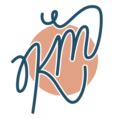In today’s classrooms, where diversity in learning needs, backgrounds, and preferences is more prominent than ever, two powerful approaches—Differentiation and Universal Design for Learning (UDL)—are empowering teachers for success by helping them create inclusive and effective learning environments. Although these approaches are often mentioned together, they serve distinct roles in supporting student success.
This blog post will break down the similarities and key differences between differentiation and UDL, showing how they enhance each other to meet the learning needs of students.

Differentiation: engaging students in learning by adapting for individual needs
Differentiation is a responsive teaching strategy that involves tailoring instruction to meet students’ unique needs, interests, and levels of readiness. Rather than planning a single pathway for the entire class, differentiation calls on educators to think dynamically and responsively, adjusting as needed for specific groups or individual learners.
Three Primary Ways to Differentiate:
Content: Adjusting what students learn to match their readiness or interests. For example, offering leveled reading materials for a literacy assignment.
Process: Engaging students in learning through flexible groupings, targeted instruction, or varied resources. Modifying the physical or emotional learning environment, which might mean providing quiet spaces or setting up routines that help different types of learners feel comfortable.
Product: Allowing students to demonstrate their understanding in various ways, such as through presentations, essays, or creative projects.
Differentiation is highly responsive and requires frequent assessment of students’ progress and needs, with the teacher making adjustments as students develop.

Universal Design for Learning: enhancing student engagement by creating access from the start
Unlike Differentiation, UDL is a proactive instructional framework. Rooted in the field of cognitive neuroscience, UDL is based on the principle of designing curriculum that provides all learners equal opportunities to succeed, no matter their background, skills, or abilities. It advocates for an environment that supports learning differences by design, minimizing the need for specific modifications or adjustments later on.
Three Core Principles of UDL:
Multiple Means of Engagement: Enhancing student engagement by providing various ways to motivate students and sustain their interest, catering to diverse emotional and intellectual needs.
Multiple Means of Representation: Engaging students in learning by offering multiple ways to present information, such as through visuals, text, and audio, to accommodate diverse sensory and processing preferences.
Multiple Means of Action and Expression: Allowing students flexibility in how they demonstrate their understanding, whether through writing, speech, artistic expression, or hands-on projects.
With UDL, the goal is to anticipate and reduce barriers in learning before they occur by building flexibility and choice into the design of the learning experience itself.

UDL and Differentiation aim to create inclusive learning environments
UDL and Differentiation aim to create inclusive learning environments, they differ in their approach and execution. But, without a doubt, both are empowering teachers for success!
- Proactive vs. Responsive: UDL is proactive, embedding flexibility into the lesson from the start so it naturally supports all learners without requiring individual adjustments. Differentiation, on the other hand, is a responsive approach, where teachers make specific adjustments based on students’ needs as they emerge.
- Design Philosophy: UDL seeks to design the learning process so it works for everyone, regardless of their background or ability. Differentiation, however, adapts content and processes to meet the individual needs of students as they arise.
- Level of Individualization: Differentiation often involves tailoring aspects of learning for particular students or groups within the classroom. UDL, however, creates a universally accessible structure that reduces the need for specific modifications, although it still allows for individual flexibility and choice.

UDL + Differentiation Together: empowering teachers for success
In practice, UDL and differentiation can—and should—complement each other. For instance, by using UDL principles to design a flexible learning environment from the outset, teachers can minimize barriers for all students, creating a foundation that is inclusive and accessible. Then, within that UDL framework, teachers can use differentiation to address the specific needs, strengths, and preferences of individual students or groups as they progress.
Imagine a classroom where lesson materials are presented in multiple formats from the start (a UDL strategy), ensuring all students can access the content. Within this setting, a teacher might still differentiate by providing advanced reading materials for some students or by allowing others to complete alternative assignments based on their interests and readiness.

UDL and differentiation help teachers create more inclusive and effective learning environments
UDL offers a broad, proactive framework to minimize barriers, and differentiation provides a responsive toolkit for refining instruction based on ongoing assessment. Together, they allow teachers to support every student in reaching their full potential, making learning more accessible, engaging, and meaningful.
In an era when education is shifting toward personalized and inclusive practices, understanding and leveraging both UDL and differentiation is key. By thoughtfully integrating these approaches, we empower students to thrive in the classroom and beyond.
Engage KM Educational Consulting for your professional development and instructional coaching needs!
Let us plan your professional development for one year or more to help you meet your school’s academic goal! We will custom-design your faculty workshops to engage and inspire teachers with innovative approaches and practical resources. We will coach individual teachers on instructional methods and technology integration to enhance student engagement.
KM Educational Consulting
K-12 Consulting, Coaching and Professional Development
For Further Reading
CAST. (2018). Universal Design for Learning Guidelines version 2.2. Retrieved from https://udlguidelines.cast.org
Hall, T., Meyer, A., & Rose, D. H. (Eds.). (2012). Universal design for learning in the classroom: Practical applications. New York: Guilford Press.
Tomlinson, C. A. (2014). The differentiated classroom: Responding to the needs of all learners (2nd ed.). Alexandria, VA: ASCD.
